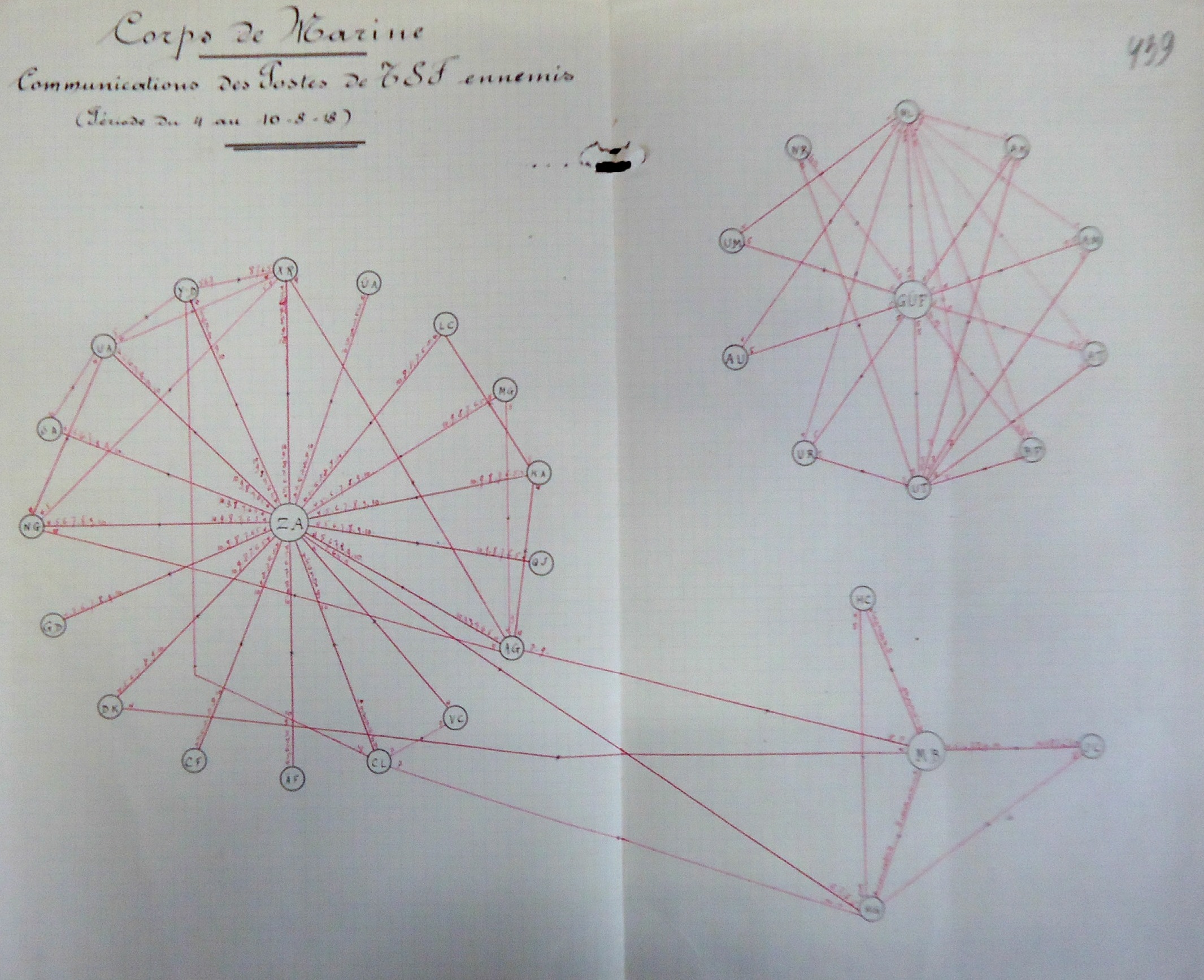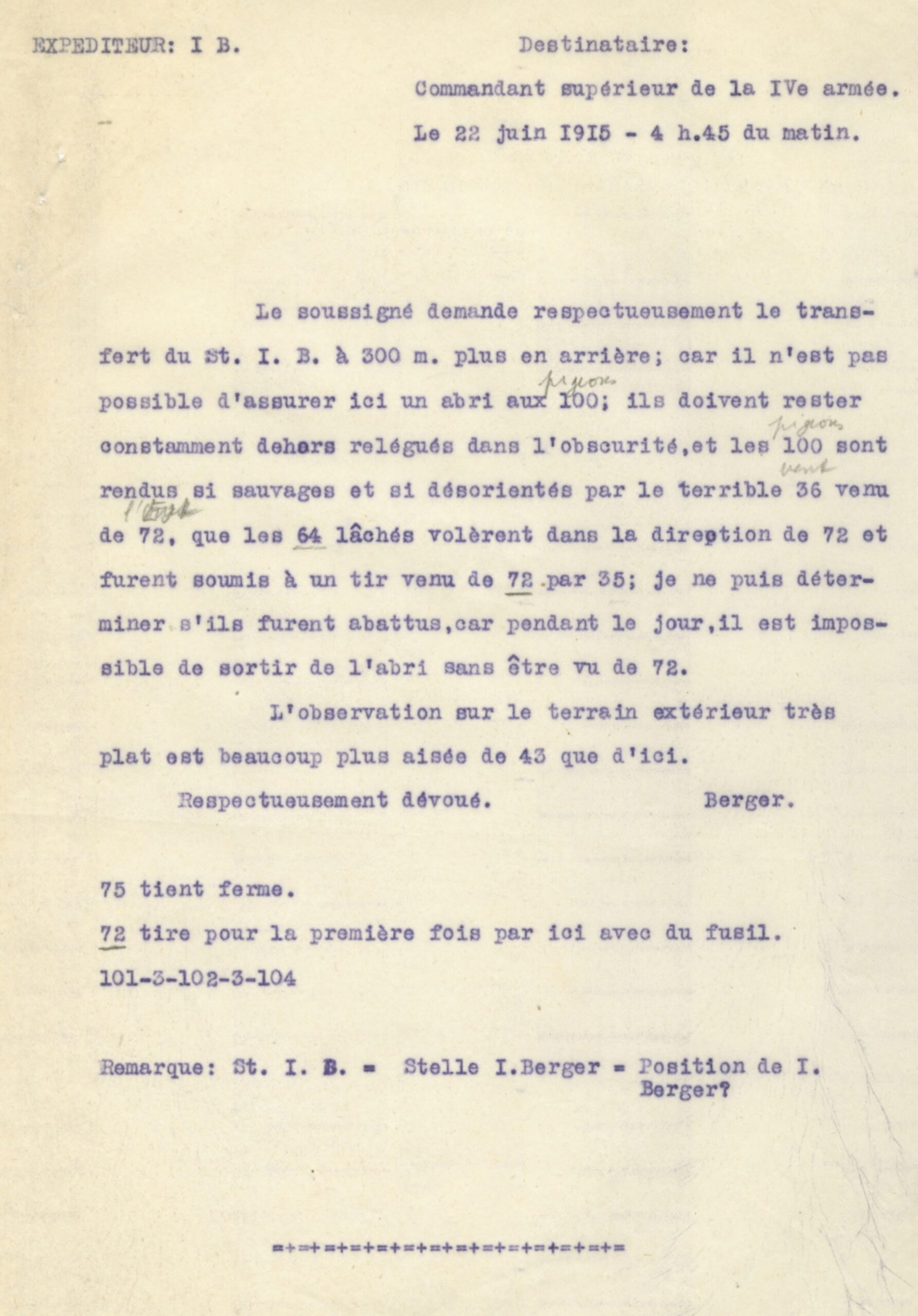| Previous page | Back to exhibition’s homepage | Next page |
| The 2nd section of the Emga (General staff of the armies) is the section that specializes in the research, study and exploitation of the information about the enemy. Due to the war, this section has a rapid expansion and professionalization of its activities. | Like the Sûreté, the 2nd Section of the General Staff of the Army – specialised in research, studies and exploitation of information on enemies – experienced increased activities and a professionalization of its techniques during the war. Information came from several sources, from the front as well as the home front, and especially from underground intelligence cells operating in occupied Belgium and neutral countries. | Like safety, The 2nd section of the Emga (General staff of the armies) - Section specializing in research, the study and exploitation of information on the enemy - knows, because of the war, an intensification of his activity and a professionalization of his techniques. The information comes from various sources, directly from the forehead but also from the rear, and in particular clandestine intelligence services operating in occupied Belgium and in neutral countries. |
| The most important sources of information are: The reports of the agents about the troop movements; The risks of prisoners and deserters; The reports of refugees from occupied Belgium; The research of documents, objects and equipment of the enemy; aerial photography; Observations on the site and train traffic; intercepting telegrams and telephone conversations and supervising the foreign press. The Belgian envoys and Allies are also a source of information. | Agent reports, troop reports (reconnaissance, patrols, operations), interviews of prisoners and deserters, reports from individuals who managed to leave occupied Belgium, studies of documents and objects belonging to the enemy, aerial pictures, observation from balloons, ground and railway observation, sound location, interception of wireless telegraphy posts and phone calls, study of foreign press and correspondences, they all were the main sources of the Belgian military intelligence in 1914-1918. Belgian legations abroad and allied armies also constituted sources for the 2nd Section. | Agent reports, troop reports (recognitions, patrols, operations), interrogations of prisoners and deserters, reports of individuals who have managed to leave the occupied Belgian territory, Study of documents and examination of the enemy's equipment objects, Air photographs, Ballo observations, Land and rail observations, overlaps by light and identify by its, Interceptions of wireless telegraph and telephone interceptions, examination of the foreign press and correspondence ... form the main sources of Belgian military intelligence in 1914-1918. Belgian legations abroad and Allied armies also form sources of information in the 2nd section. |
 |
|
| The 2nd section analyzes and exploits the information. She draws up reports, makes maps, produces intelligence bulletins.. This work is also done by the 2nd sections within every division of the army. | The collected information was analysed, then exploited in the form of news bulletins, district maps, and other various reports, by the 2nd Section of the General Staff of the Army, but also by all the 2nd sections established in each division of the army. | The information collected is analyzed and then used in the form of information bulletins, of sector plans, of various work, by the 2nd section of the EMGA but also by the 2nd sections installed with each army division. |

Plan of the German armies – Map of German armies – German armies plan
| Previous page | Back to exhibition’s homepage | Next page |

